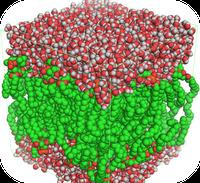Soft Matter theory and SimulationMain areas of researchOur main research is centered around multiscale simulation method development and application to the materials which includes, • Properties of liquids of simple and complex molecules • Polymers, block copolymers, polymer networks in bulk, solution on surface and in confinement • Biological materials like proteins and lipid bilayers • Clusters, nanotubes, nanowires of metals, semiconductor materials Our goal is to predict properties of these materials from simulations in different lengths (sub nanometer to micro) and time scale (pico to milli sceond) with a quantatively and in some cases qualitative accuracy to elucidate the macroscopic properties from molecular and mesoscopic scale. • Molecular structure, mesoscopic morphology • Liquid structure, solvation cell dynamics, hydrogen bond network • Thermodynamical properties • Interfacial tension, adhesion, surface coverage • Conformation of proteins oligomers • Structural and electronic properties of materials We develop new methods for simulations and analysis according to the need of the systems. • Multiscale method development, systematic development and parameter transfer methods from quantum chemical calculations to classical molecular dynamics simulations to coarse gained and mesoscale dissipative particle dynamics simulations • Force field development and optimization for new systems for molecular dynamics simulations Composites
References
Bio-MembraneDPPC-Water Interface - water insertion mechanism
Refereces
Peptide and ProteinEarly stage unwinding mechanism of homo and co-poly peptides
Refereces
|




